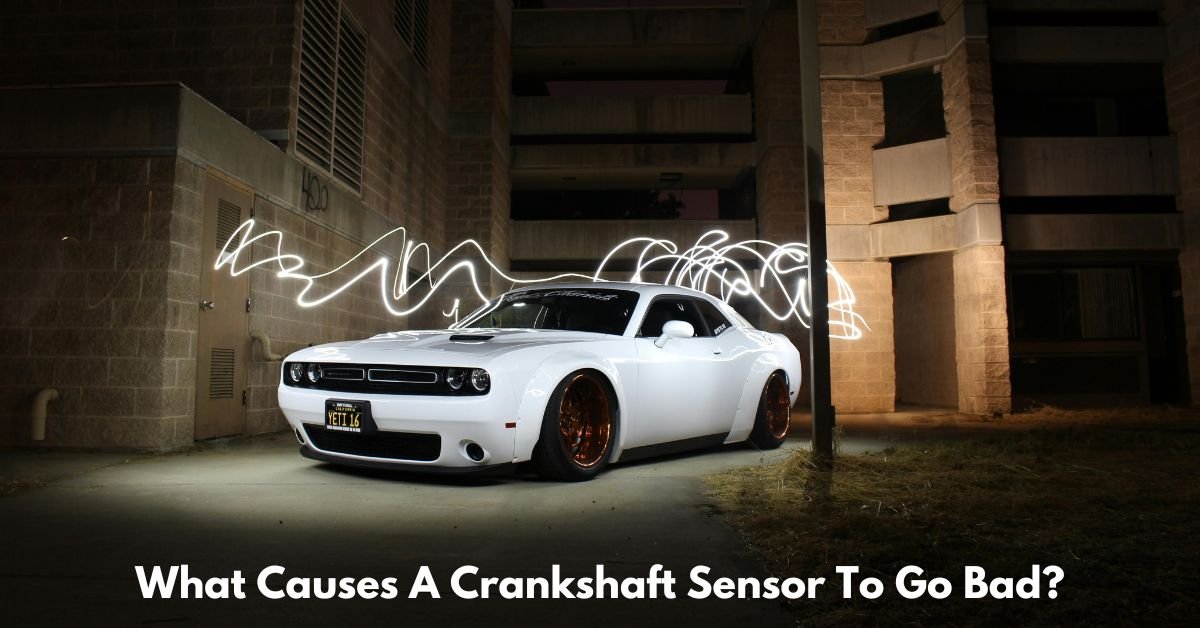The crankshaft position sensor plays a crucial role in modern vehicles, providing vital information to the engine control unit (ECU) about the position and rotational speed of the crankshaft. This data is essential for regulating various engine functions, such as ignition timing, fuel injection, and engine performance. If the crankshaft sensor fails, it can lead to a variety of engine issues, ranging from poor performance to a complete engine shutdown. But what causes a crankshaft sensor to go bad? Let’s dive into the common reasons.
What Causes a Crankshaft Sensor to Go Bad?
1. Wear and Tear Over Time
Like many components in a vehicle, the crankshaft sensor is not immune to wear and tear. Over time, the sensor can degrade due to constant exposure to heat, vibration, and engine oils. The repeated heating and cooling cycles that the engine undergoes can cause the sensor to weaken or malfunction. As a result, the sensor may not be able to accurately detect the crankshaft’s position, leading to performance issues or failure to start the engine altogether.
2. Exposure to Extreme Heat
The crankshaft sensor is located near the engine, which means it is exposed to high temperatures during operation. The engine’s heat can affect the sensor’s internal components, especially if the engine is running hotter than normal due to cooling system issues or poor maintenance. Over time, this exposure to extreme heat can cause the sensor’s wiring or circuitry to break down, leading to faulty readings or total failure of the sensor.
3. Electrical Issues and Wiring Problems
The crankshaft sensor is an electrical component, so any issues with the wiring, connectors, or electrical supply can affect its performance. For example, frayed or corroded wiring, loose connections, or damaged connectors can interfere with the sensor’s ability to send accurate signals to the ECU. A short circuit, broken wire, or loose connector could prevent the sensor from functioning properly, which can lead to misfires, poor engine performance, or failure to start.
4. Contamination
The crankshaft sensor can also fail due to contamination. Since it is located in the engine, it is exposed to various forms of debris and contaminants, including dirt, dust, oil, and coolant. Over time, these contaminants can build up on the sensor, impairing its ability to detect the crankshaft’s position accurately. Oil leaks or coolant spills near the sensor can lead to corrosion or interference, causing the sensor to malfunction.
5. Faulty Installation or Repairs
In some cases, the crankshaft sensor may fail due to poor installation or repairs. If the sensor is not installed correctly or the wrong type of sensor is used, it may not function as expected. Additionally, improper handling of the sensor during installation can damage the component or the wiring. This can result in inaccurate readings, poor engine performance, or even complete engine failure.
Must Read: What To Do After Replacing Crankshaft Sensor?

6. Manufacturer Defects
Sometimes, a crankshaft sensor can fail due to defects in its manufacturing. While rare, a faulty sensor could have issues right out of the box. In such cases, the sensor may not provide the correct signals to the ECU, resulting in engine performance problems. If you suspect a manufacturer defect, it’s important to check whether the sensor is still under warranty or if the issue can be addressed through a recall.
7. Sudden Impact or Physical Damage
Since the crankshaft sensor is located near the engine, it is susceptible to physical damage from sudden impacts or accidents. A severe bump, collision, or jolt can cause the sensor to break or malfunction. For example, if a vehicle hits a curb or experiences an unexpected drop in temperature, the sensor could crack or develop internal damage. This physical trauma may prevent the sensor from working properly and could lead to a malfunction.
8. Aging and Poor Maintenance
In some cases, the issue may be as simple as the vehicle aging without proper maintenance. Regular vehicle maintenance, such as oil changes, coolant checks, and engine inspections, can help prolong the lifespan of the crankshaft sensor. If the vehicle is not properly maintained, components like the crankshaft sensor may wear out prematurely.
Conclusion
The crankshaft position sensor is a small yet critical component in modern vehicles. When it fails, it can lead to poor engine performance, misfires, or even a complete engine shutdown. Several factors can contribute to a sensor failure, including wear and tear, exposure to extreme heat, electrical issues, contamination, faulty installation, and physical damage. Understanding the causes of crankshaft sensor failure can help you take proactive steps to maintain your vehicle and avoid costly repairs. If you experience symptoms like rough idling, engine misfires, or trouble starting your car, it’s important to have your crankshaft sensor inspected and replaced as needed. Regular maintenance and care can help extend the life of your sensor and ensure your vehicle runs smoothly for years to come.
